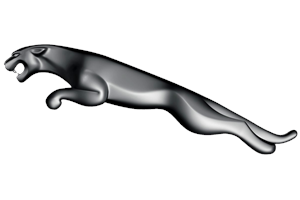


This edition of the Jaguar E Type 3.8L Roadster is the 4 speed / Manual version and was first brought out in 1961. This was at around the same time as the introduction of the 1962 Chevrolet Corvette C1 327 V8 and the 1962 Ferrari 250 GTO.This particular Jaguar E Type has a 3781cc Naturally Aspirated Petrol powerplant with 6 cylinders in a St formation.
The E Type shares its Petrol St6 engine configuration with the likes of the 1965 Aston-Martin DB6 1965 and the . If you're looking for other fast cars which share the E Type's Rear Wheel Drive, Cabriolet combination then how about the 1982 Fiat X1/9 1.5 8V or the 1965 Aston-Martin DB6 1965.
Weighing in at 1220 kgs (2689 lbs) this makes the Jaguar E Type 3.8L Roadster in the same weight category as the 2020 Audi A1 Sportback 40 TFSI S tronic S line or the give or take 50kg.
In terms of power the 3781cc 12V St6 engine produces 265 bhp (197 kW) @ 5500 rpm similar to the 2022 Hyundai i30 N Performance 2.0 Turbo (276 bhp) or the 2021 KIA K5 GT 2.5 Turbo (290 bhp).
The Naturally Aspirated St6 throws out 260 lb-ft (352.5 Nm) @ 4000 rpm placing it with cars of similar torque performance figures such as the 2023 Toyota Corolla GR Circuit Edition 1.6 Turbo (273 lb-ft) or the 2022 Toyota Corolla GR 1.6 Turbo (273 lb-ft).
If one combines the weight with power or torque performance for the Jaguar E Type you can get a better idea of it's real world performance.
![Iso Grifo Can-Am 7.4 V8 - [1970] image Iso Grifo Can-Am 7.4 V8 - [1970] image](/editionimages/1174.jpg)
The 1970 Iso Grifo Can-Am 7.4 V8 (242.2 bhp per ton) has similar Bhp Per Ton stats as the Jaguar E Type.
The Jaguar E Type has a Power to weight ratio of 217.2 bhp per ton and 213.1 lb-ft per ton. Bhp Per Ton figures of the 1961 E Type competing with the 1970 Iso Grifo Can-Am 7.4 V8 (242.2 bhp per ton) or the 2009 Bentley Continental GTC Speed (242.2 bhp per ton).
If you agree with the late great Carroll Shelby then arguably an even better indicator of potential performance, Torque. Use weight as well and you end up with - Torque per ton, with the Jaguar E Type generating around 213.1 lb-ft per ton. If you're curious as to what other cars have as much torque to weight then look no further than the 2018 Bentley Bentayga 4.0 V8 Bi Turbo (237.8 lb-ft per ton) or the 1993 Mercedes SL Class 60 AMG 6.0 V8 (237.7 lb-ft per ton).
With a 0-60mph time of 7.10 secs or a 0-100km/h (0-62mph) of 7.3 secs, this made the Jaguar E Type 3.8L Roadster as fast as the 2018 Abarth 595 Turismo 1.4 Turbo (7.10 secs) the 2013 Land-Rover Range Rover Sport 3.0 SDV6 (7.10 secs) the 2012 Lexus ES 350 (7.10 secs) the or the 2011 Abarth 500C Essesse 1.4 Turbo (7.10 secs). This Jaguar E Type 3.8L Roadster is also faster than the 2018 Abarth 695 XSR Yamaha Automated (7.20 secs) the 2015 Volkswagen-VW Golf GTD 2.0 TDI DSG (7.20 secs) the 2014 Peugeot 308 GT 1.6 Turbo (7.20 secs) the and the 2013 Volvo S60 T5 2.5 Turbo (7.20 secs).
When talking about the performance of the Jaguar E Type on the drag strip it can reach a quarter mile in an estimated 13.64 secs @ 100.3 mph. Similar performance down the quarter mile can be found with the the 1999 Nissan Skyline R34 GTR (13.59 secs), the 2014 Audi A4 S4 3.0 V6 S-Tronic (13.59 secs), and the 2008 Subaru Impreza WRX S (13.60 secs).
Modern performance cars are often artificially restricted to 155mph. The 1961 version of the Jaguar E Type 3.8L Roadster has a maximum speed of 149mph.
If maxing out your car on the AutoBahn is your thing and you're wondering what's faster than the 1961 Jaguar E Type 3.8L Roadster then how about the 2023 Lotus Eletre 603 bhp (160 mph), the 2022 Lotus Eletre S 603 bhp (160 mph), or the 2009 Lotus Evora 3.5 V6 (160 mph).










Abarth 695 70th Anniversario 1.4 Turbo
Engine: Turbo Petrol | 1368cc 16v St4
Top Speed: 140 mph
0-60mph: 6.50 seconds

Aston-Martin DB11 5.2 V12 Twin Turbo
Engine: Twin Turbo Petrol | 5204cc 48v V12
Top Speed: 321.8 kph
0-100kph: 3.9 seconds



















